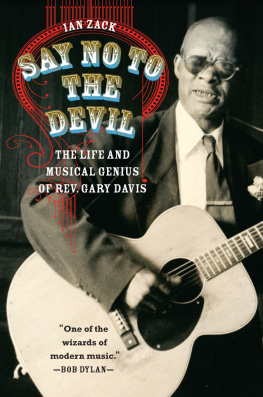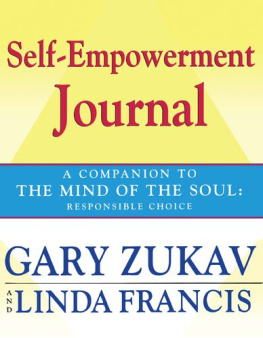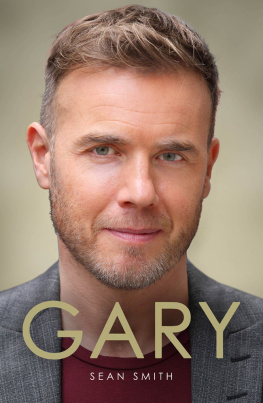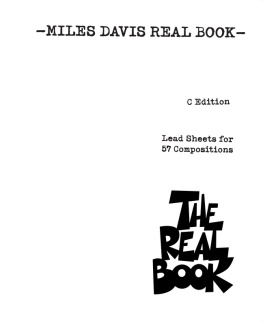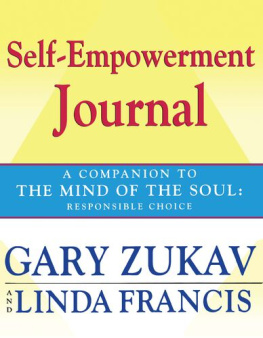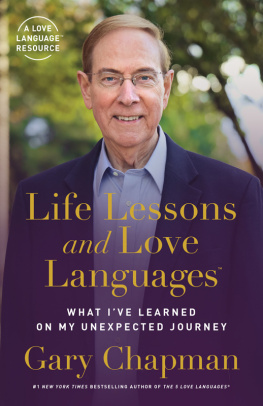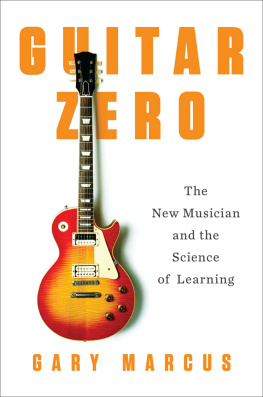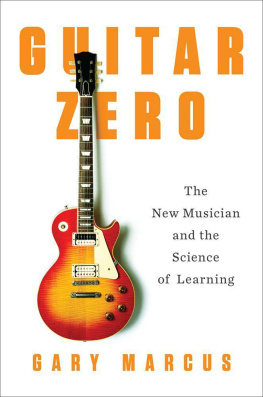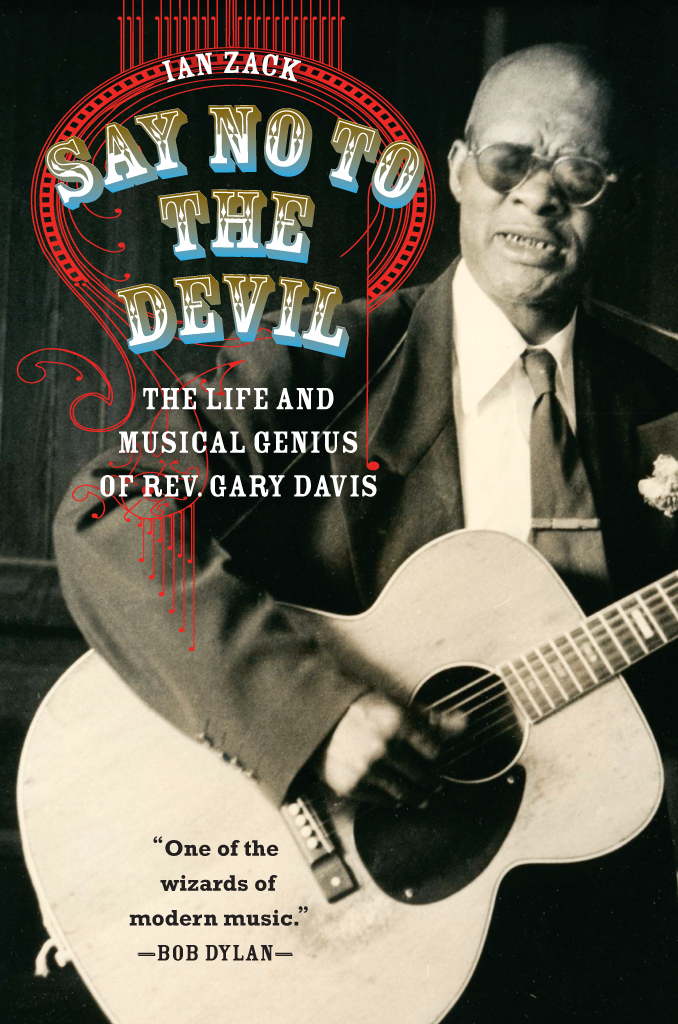Say No to the Devil

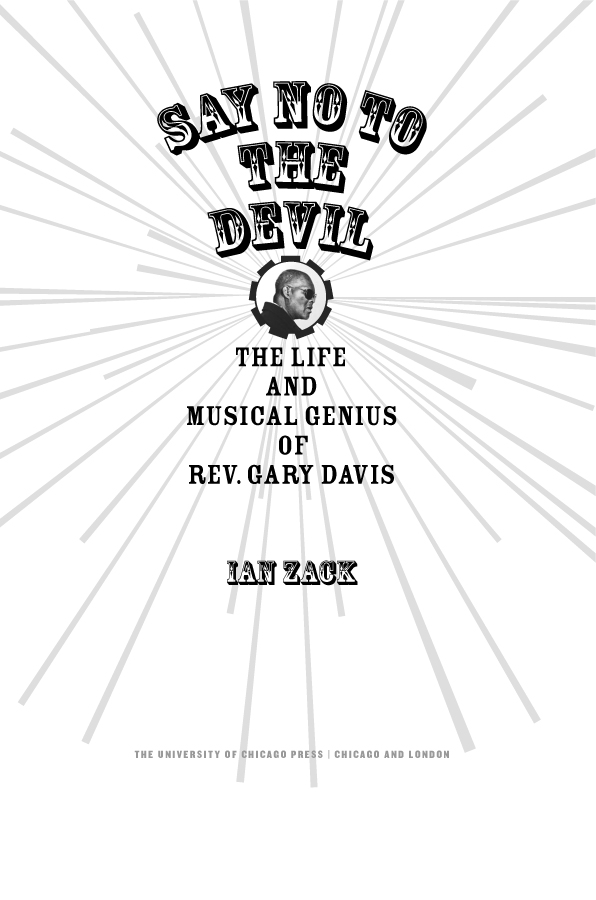
Ian Zack is a New Yorkbased journalist whose work has appeared in the New York Times, Forbes, and Acoustic Guitar. He worked as a concert booker for one of the oldest folk venues in New York, The Good Coffeehouse, where he got to know some of Rev. Gary Daviss students.
The University of Chicago Press, Chicago 60637
The University of Chicago Press, Ltd., London
2015 by Ian Zack
All rights reserved. Published 2015.
Printed in the United States of America
24 23 22 21 20 19 18 17 16 15 1 2 3 4 5
ISBN-13: 978-0-226-23410-6 (cloth)
ISBN-13: 978-0-226-23424-3 (e-book)
DOI: 10.7208/chicago/9780226234243.001.0001
Library of Congress Cataloging-in-Publication Data
Zack, Ian, author.
Say No to the devil : the life and musical genius of
Rev. Gary Davis / Ian Zack.
pages ; cm
Includes bibliographical references and index.
ISBN 978-0-226-23410-6 (cloth : alk. paper)
ISBN 0-226-23410-X (cloth : alk. paper)
ISBN 978-0-226-23424-3 (e-book) 1. Davis, Gary, 18961972.
2. GuitaristsUnited StatesBiography. 3. Blues musicians
United StatesBiography. 4. Musicians, BlackUnited
StatesBiography. I. Title.
ML419.D386Z33 2015
787.871643092dc23
[B ]
2014026575
This paper meets the requirements of ANSI / NISO Z39.48-1992 (Permanence of Paper)
We cant be a devil all our lives. We have to sing some good songs sometimes to keep the devil off us.
Rev. Gary Davis
Contents
I could not have written this book without the help of hundreds of people who gave their time, insight, and expertise along the way.
When I first discussed the idea of a Rev. Gary Davis biography with Daviss former guitar student Stefan Grossman, his offer was characteristic: Id be happy to help you 100 percent. Over the course of several years, Grossman not only provided me with personal artifacts from his private archive, including photos, letters, documents, and other ephemera, but also acted as a sounding board and guided me in my research, never tiring of my countless arcane questions. His deep affection for Davis is palpable, but it neither clouded his judgment nor intruded on my independence as a scholar.
Thanks also to Mitch Greenhill of Folklore Productions and Chandos Music, Daviss management company and music publisher, who shared documents and memories of the Reverend and of his father, Manny Greenhill, Daviss longtime manager.
Librarians and archivists are the unsung heroes of historical research. Dozens assisted me with long-distance queries about their collections, including Greg Johnson at the Blues Archive, University of Mississippi; Anna St. Onge at the Clara Thomas Archives and Special Collections, York University; Scott Krafft of the Northwestern University Library; Henry Fulmer at the South Caroliniana Library, University of South Carolina; Kristin Eshelman at the Thomas J. Dodd Research Center, University of Connecticut; Jason Prufer of the Kent State University Main Library; Lynn Richardson of the Durham County Library; Scott Sanders of Antioch College; Marilyn Graf at the Indiana University Archives of Traditional Music; Alvin Singh of the Lead Belly Archive; John Rumble of the Country Music Hall of Fame and Museum; Maureen Russell and David Martinelli at the UCLA Ethnomusicology Archive; Tiffany Colannino of the Woody Guthrie Archives; Gavin W. Kleespies of the Cambridge Historical Society; and Meredith Rutledge-Borger of the Rock and Roll Hall of Fame and Museum.
Special thanks to Todd Harvey at the Library of Congress, who on my behalf plumbed deep into the librarys holdings (particularly the expansive Alan Lomax Collection), sometimes based only on my hunches or suppositions; Jeff Place at the Smithsonian Institution, who not only was a font of knowledge about Folkways Records and Moses Asch but also allowed me to employ his interns for my research during their off hours; and Aaron Smithers and Jamie Vermillion at the Louis Round Wilson Special Collections Library, University of North Carolina at Chapel Hill, who help administer the Southern Folklife Collection, one of the great archives of American music.
Its a fitting tribute to Daviss own patience and generosity as a teacher that so many of his former students jumped at the chance to provide recollections, artifacts, and insights into his life and music. In addition to Stefan Grossman, several deserve singling out, including Ernie Hawkins, Alex Shoumatoff, Joan Fenton, Barry Kornfeld, North Peterson, Larry Brezer, John Mankiewicz, John Dyer, Allan Evans, and Woody Mann. Other musical acquaintances of Davis also shared stories and items from their own collections, including Larry Cohn, Andy Cohen, and Happy Traum.
Fortunately for posterity, some talented folklorists and promoters took an interest in Davis and his music early in his time in New York and throughout the folk revival. Izzy Young, folk musics Jeremiah, shared insights, copious opinions, and precious relics from his priceless collection, including diary entries and concert posters; Ed Pearl, the irrepressible owner of the Ash Grove club in Los Angeles, knew Davis as well as any promoter, and his insights proved invaluable; Chris Strachwitz of Arhoolie Records provided background on a number of key episodes, including enough detail that I was able to locate a long-lost lawsuit over the song You Gotta Move; John Ullman, who hosted the Reverend on the West Coast twice, provided many stories about and insights into Daviss life on the road; and John Cohen, one of the first New Yorkers to take an interest in Davis after his move from the South, shared photos and memories.
A number of historians were generous in their willingness to educate me and provide leads for my research. First and foremost, Ronald D. Cohen, professor emeritus of history at Indiana University Northwest, who opened his vast Rolodex to me, eagerly prodded me down fruitful roads, and read the raw manuscript; also Neil V. Rosenberg at Memorial University of Newfoundland, who sent me unpublished excerpts of interviews as well as copies of newsletters from his days in the Indiana University Folksong Club; Michael J. Kramer of Northwestern University, who gave me entre into Northwesterns archive of the Berkeley Folk Festival and helped me get in touch with festival organizers; Elijah Wald, who not only walked me through the publishing process but also offered terrific advice on improving my narrative and provided me with unpublished materials from his own research; Jeffrey Noonan of Washington University in St. Louis, who educated me about nineteenth-century parlor guitar styles; and William Lee Ellis of Saint Michaels College, who shared materials and insights from his extensive research on Gary Davis.
In addition, I owe a great debt to the late Robert Tilling, whose lovingly compiled book in tribute to Gary Davis was an invaluable source. When I called him just weeks before his death, he told me: I was hoping someone like you would come along, and he encouraged me to make use of the anecdotes hed collected over many years from Daviss friends and musical contemporaries.
Research assistants around the country helped me look through archives and scan microfilm reels, including Steven Kruger at the University of North Carolina, Chapel Hill; Aja Bain, Adam Schutzman, and William Leisek at Smithsonian Folkways; Manu Shetty at the University of Chicago; Ashley Turner at Harvard University; and Nancy Morgan and Michael Panzer at Temple University. Much appreciation also goes to Vennie Deas Moore, a talented researcher who assisted in efforts to track Gary Davis and his family in South Carolina.

